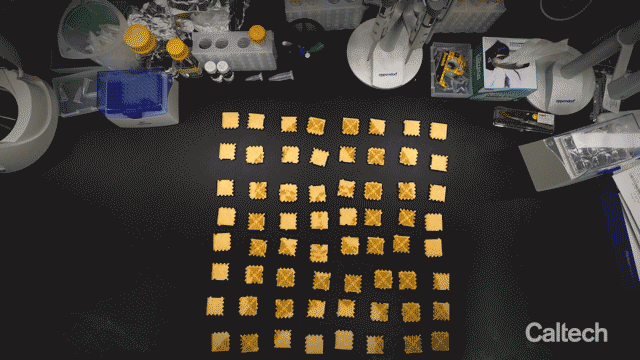Image: California Institute of Technology
Mona Lisa’s smirk is now nano-sized.Researchers at the California Institute of Technology “painted” the portrait using a technique called “DNA origami,” where strands of DNA are programmed to self-assemble into specified shapes.It’s the world’s smallest recreation of Leonardo da Vinci’s most famous portrait, and the world’s largest flat DNA structure ever built. It’s about 700 nanometers wide, or 0.000028 inches.In 2016, another Caltech group recreated Van Gogh’s “Starry Night” out of DNA, using a method pioneered by Caltech engineer Paul Rothemund in 2006. DNA origami canvases are made from one long strand of DNA and several shorter single strands that “staple” together parts of the long piece. The staples pull sections of the long strand over onto itself into the shape it’s programmed for.In a GIF illustrating the process, they demonstrate how the different DNA “tiles” come together to form the final image, like a tiny puzzle made of Cheez-Its. The “Nano Lisa,” as they’ve deemed it, is another proof-of-concept for an assembly technique that can contribute to building smart programmable materials and more advanced nanotechnology. The technique can be used to create “large” DNA canvases displaying any image desired. Large, in this case, is still not very big, being nanotechnology and all.An earlier version of this article incorrectly stated the size of the portrait as 64,000 nanometers wide. The correct size is 700 nanometers wide.
The “Nano Lisa,” as they’ve deemed it, is another proof-of-concept for an assembly technique that can contribute to building smart programmable materials and more advanced nanotechnology. The technique can be used to create “large” DNA canvases displaying any image desired. Large, in this case, is still not very big, being nanotechnology and all.An earlier version of this article incorrectly stated the size of the portrait as 64,000 nanometers wide. The correct size is 700 nanometers wide.
Advertisement
